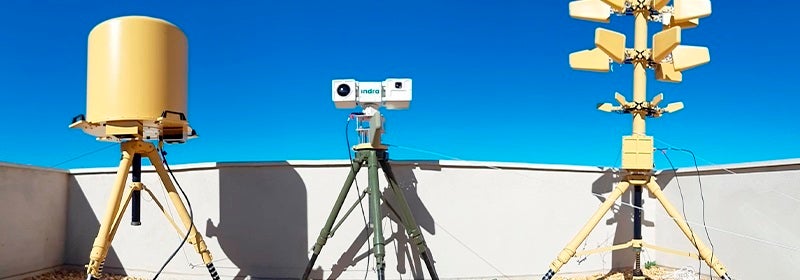
Spanish firm Indra has unveiled its strategy for the development of its anti-drone system to safeguard critical infrastructure from the threat of next-generation unmanned aircraft system (UAS).
The company noted that its technology will ensure the protection of critical infrastructures, airports, official buildings and public events by countering drones.
The focus is on building the right capabilities to tackle the threat posed by the ever-evolving UAS aircraft.
Indra’s anti-drone system is designed to be integrated with airports’ conventional air traffic management (ATM) and unmanned (UTM) systems, as well as air defence military systems.
The company intends to bolster its Anti-RPAS Multisensor System (ARMS) to maintain its position in this market.
Military users around the world deploy the ARMS system to neutralise drone threats.

US Tariffs are shifting - will you react or anticipate?
Don’t let policy changes catch you off guard. Stay proactive with real-time data and expert analysis.
By GlobalDataAt the ‘Countering Drones’ event in London last week, Indra stated that to counter evolving UAS threats, ‘the rapid and constant development of anti-drone systems is necessary, a pace that only few companies in the world like Indra will be able to match’.
The company’s counter-UAS strategy is guided by three basic principles to deal with increasingly intelligent and autonomous drones.
Firstly, Indra focuses on adaptation to the specific needs of the asset that is being protected.
The second principle involves the integration and combined use of different sensors and countermeasures. According to the company, the third involves redundant use of sensors.
Indra has highlighted the need for surveillance systems that can detect and identify small drones.
In a statement, Indra said: “These systems must cope with different strategies of deception, concealment or even jamming that specialised attackers can develop.
“The anti-drone systems must identify their type fast, even the drone model, and classify it as a friendly or enemy model.”
The Spanish firm also called for a regulatory framework to define ‘who can use an anti-drone system, under what conditions and to what extent’.
In May, the company supplied its ARMS system to an unidentified Asian nation to help enhance the protection of military bases and installations.
Indra also deployed its AIRDEF air defence system to the Oman Air Force to help improve surveillance of the airspace.



